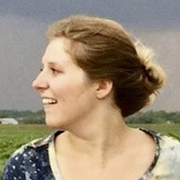A .gov website belongs to an official government organization in the United States.
A lock () or https:// means you've safely connected to the .gov website. Share sensitive information only on official, secure websites.

Stratosphere-to-troposphere mass transport to the planetary boundary layer (STT-PBL) peaks over the western United States during boreal spring, when deep stratospheric intrusions are most frequent. The tropopause-level jet structure modulates the frequency and character of intrusions, although the precise relationship between STT-PBL and jet variability has not been extensively investigated. In this study, we demonstrate how the north Pacific jet transition from winter to summer leads to the observed peak in STT-PBL. We show that the transition enhances STT-PBL through an increase in storm track activity which produces highly-amplified Rossby waves and more frequent deep stratospheric intrusions over western North America. This dynamic transition coincides with the gradually deepening planetary boundary layer, further facilitating STT-PBL in spring. We find that La Nina conditions in late winter are associated with an earlier jet transition and enhanced STT-PBL due to deeper and more frequent tropopause folds. An opposite response is found during El Nino conditions. ENSO conditions also influence STT-PBL in late spring/early summer, during which time La Nina conditions are associated with larger and more frequent tropopause folds than both El Nino and ENSO neutral conditions. These results suggest that knowledge of ENSO state and the north Pacific jet structure in late winter could be leveraged for predicting the strength of STT-PBL in the following months.
Melissa Breeden received her undergraduate and graduate degrees in Atmospheric and Oceanic Science from the University of Wisconsin-Madison. She is a NOAA Climate and Global Change postdoctoral fellow at CSL, studying stratosphere-to-troposphere ozone transport variability and predictability on subseasonal timescales in the Chemistry and Climate Processes research program.
ALL Seminar attendees agree not to cite, quote, copy, or distribute material presented without the explicit written consent of the seminar presenter. Any opinions expressed in this seminar are those of the speaker alone and do not necessarily reflect the opinions of NOAA or CSL.